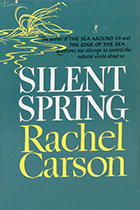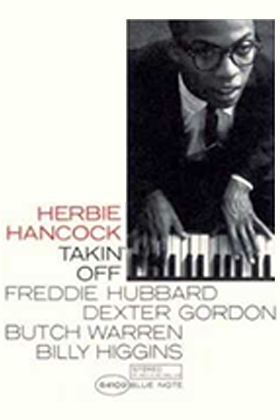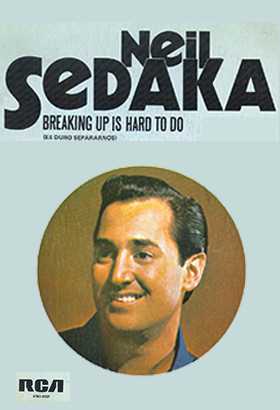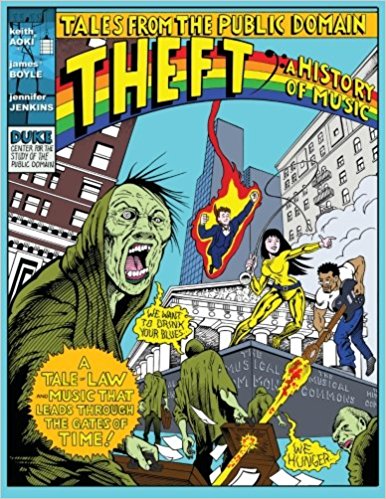
Public Domain Day 2019 Pre-1976
What Could Have Entered the Public Domain on January 1, 2019?
Under the law that existed until 1978 . . . Works from 1962 Tweet

The books A Wrinkle in Time and The Guns of August, the films Lawrence of Arabia and The Longest Day, the songs Twistin' the Night Away and Blowin' in the Wind, and more. . .
Current US law extends copyright for 70 years after the date of the author's death, and corporate “works-for-hire” are copyrighted for 95 years after publication. But prior to the 1976 Copyright Act (which became effective in 1978), the maximum copyright term was 56 years—an initial term of 28 years, renewable for another 28 years. Under those laws, works published in 1962 would enter the public domain on January 1, 2019. Under current copyright law, we’ll have to wait until 2058.1 Elsewhere on this site, we celebrate works from 1923 that will actually be entering the public domain in 2019, after a 95-year term. But 1923 was a long time ago—imagine if works from 1962 and earlier were “free as the air to common use”! Here’s what could have been.
Books
What books would be entering the public domain if we had the pre-1978 copyright laws? You might recognize some of the titles below.
- Madeleine L’Engle, A Wrinkle in Time
- Rachel Carson, Silent Spring
- Barbara Tuchman, The Guns of August
- Katherine Anne Porter, Ship of Fools
- James Baldwin, Another Country
- Philip K. Dick, The Man in the High Castle
- Thomas Kuhn, The Structure of Scientific Revolutions
- Vladimir Nabokov, Pale Fire
- Anthony Burgess, A Clockwork Orange
- Michael Harrington, The Other America
- Milton Friedman, Capitalism and Freedom
- J.G. Ballard, The Drowned World
- Ray Bradbury, Something Wicked This Way Comes
- Ken Kesey, One Flew Over the Cuckoo’s Nest
- Edward Albee, Who’s Afraid of Virginia Woolf?
- Aleksandr Solzhenitsyn, One Day in the Life of Ivan Denisovich
- Doris Lessing, The Golden Notebook
- Helen Gurley Brown, Sex and the Single Girl
- Ingri d’Aulaire and Edgar Parin d’Aulaire, D’Aulaires’ Book of Greek Myths
What an astounding list. A book that helped launch the environmental movement, and a post-apocalyptic account of a world “drowned” by global warming. A history chronicling the events and miscalculations leading to World War I, and an alternate history in which Nazi Germany and Imperial Japan win World War II. Seminal works on scientific progress, poverty, and capitalism. Dark, haunting, and influential novels. A beautifully illustrated introduction to Greek mythology. These are but a fraction of what would be entering the public domain on January 1. And this is the production of but a single year. Copyright term extensions have kept decades of such works from the public domain.
Imagine these books being freely available to students, artists, and enthusiasts around the world. You would be free to turn them into a play, or make them into a film. You could translate them into other languages. You could read them online or buy cheaper print editions, because others were free to republish them. Empirical studies have shown that public domain books are less expensive, available in more editions and formats, and more likely to be in print—see here, here, and here. Imagine a digital Library of Alexandria containing all of the world’s books from 1962 and earlier, where, thanks to technology, you can search, link, annotate, copy and paste. (Google Books has brought us closer to this reality, but for copyrighted books where there is no separate agreement with the copyright holder, it only shows three short snippets, not the whole book.) Instead of seeing these literary works enter the public domain in 2019, we will have to wait until 2058.
Movies
Here are a few of the movies from 1962 that would have become available this year.
- Lawrence of Arabia
- The Longest Day
- The Manchurian Candidate
- Dr. No
- Jules and Jim
- Sanjuro
- Birdman of Alcatraz
- Mutiny on the Bounty
- Days of Wine and Roses
- How the West Was Won
If they were in the public domain, community theaters could show the full features. Libraries and archivists would be free to digitize and preserve them. Artists could incorporate them into fan fiction. But we won’t see in the public domain for another 39 years. The films above are famous, so thanks to projects like the National Film Registry, we’re not likely to lose them entirely. The true tragedy is that of forgotten films that are literally disintegrating while preservationists wait for their copyright terms to expire.2
Music
What 1962 music could you have freely used on January 1, 2019?
- Blowin’ in the Wind, Bob Dylan
- Watermelon Man, Herbie Hancock (from his first album, Takin’ Off)
- Twistin’ the Night Away, Sam Cooke
- You Can’t Judge a Book by the Cover and You Shook Me, Willie Dixon
- Surfin’ Safari, The Beach Boys
- Songs from A Funny Thing Happened on the Way to the Forum, Stephen Sondheim
- Dream Baby (How Long Must I Dream), Cindy Walker
- Big Girls Don’t Cry, Bob Crewe and Bob Gaudio
- Breaking Up Is Hard To Do, Neil Sedaka and Howard Greenfield
- Little Boxes, Malvina Reynolds
- The Loco-Motion, Gerry Goffin and Carole King
- Soldier Boy, Luther Dixon and Florence Greenberg
Folk anthems, jazz and blues classics, pop earworms, Broadway tunes. . . . You would be free to download sheet music for these songs, publicly perform them, or set a short film to them, all without permission or fee.3 You could quote the full lyrics in a book or article, without fear of a lawsuit. Today these musical works remain copyrighted until 2058. Note that the list above refers to the “musical composition”—the underlying music and lyrics—and the songwriters who wrote them, such as Cindy Walker for “Dream Baby.” At the time, federal copyright only covered compositions, and did not cover the “sound recordings” embodying particular performances of them, such as Roy Orbison’s performance of “Dream Baby.” This has changed—under current law, compositions and sound recordings are covered by two separate copyrights.4 (To learn more about music copyright, and the rich history of borrowing in music, see our free comic book!)
Science from 1962—copyrighted research, still behind paywalls
1962 was another exciting year for science. John Glenn became the first American to orbit the earth. The muon neutrino subatomic particle was discovered by Leon Lederman, Melvin Schwartz and Jack Steinberger. The “father of the Internet,” J. C. R. Licklider, began discussing an “Intergalactic Computer Network,” and co-authored (with Welden E. Clark) an article entitled “On-line man-computer communication.” But if you want to read Licklider’s 1962 article on the journal website, and you do not have a subscription or institutional access, you will encounter a paywall.
A distressing number of scientific articles from 1962 require payment, or a subscription or account. Want to download “Unconscious Mental Imagery in Art and Science” in the journal Nature? Here’s the paywall—the pdf is $32. Science and JAMA 5 both charge $30 to view a single article from 1962 for 24 hours. Want to read about experiences from “The Obesity-Diabetes Clinic” in JAMA? Here’s the payment page. Want to read about a report on elevations and ice thickness in “Oversnow Traverse from McMurdo to the South Pole”? If you go to Science’s page to purchase digital access, you will see that you can purchase access for 1 day for $30 US—but that’s not all. You also have to agree to the following restrictions and conditions: “You may view, download, and/or print the article for your personal scholarly, research, and educational use” but may not distribute or post it, and you must agree both to accept cookies and be contacted from time to time about the publisher’s products. Of course, many scientists will have institutional access to these journals, but this access is not guaranteed—even institutions such as Harvard have considered canceling their subscriptions because they could no longer afford the escalating prices of major journal subscriptions.
It’s remarkable to find scientific research from 1962 hidden behind publisher paywalls. Thankfully, some publishers have made older articles available in full online, so that you can read them, even though it may still be illegal to copy and distribute them. In addition, some older articles have been made available on third party websites, but this is not a stable solution for providing reliable access to science. Third party postings can be difficult to find or taken down, links can get broken, and would-be posters may be deterred by the risk of a lawsuit. Under the pre-1978 copyright term, all of this history would be free to scholars, students, and enthusiasts.
Not all scientific publishers work under this kind of copyright scheme. “Open Access” scientific publications, like those of the Public Library of Science, are under Creative Commons licenses, meaning that they can be copied freely from the day they are published.
Works from 1990!
Most of the works highlighted here are famous—that is why we included them. And if that fame meant that the work was still being exploited commercially 28 years after its publication, the rights holders would probably renew the copyright. But we know from empirical studies that 85% of authors did not renew their copyrights (for books, the number is even higher—93% did not renew), since most works exhaust their commercial value very quickly.
Under the law that existed until 1978 . . . Up to 85% of all copyrighted works from 1990 might have been entering the public domain on January 1, 2019.
That means that all of these examples from 1962 are only the tip of the iceberg. If the pre-1978 laws were still in effect, we could have seen 85% of the works published in 1990 enter the public domain on January 1, 2019. Imagine what that would mean to our archives, our libraries, our schools and our culture. Such works could be digitized, preserved, and made available for education, for research, for future creators. Instead, they will remain under copyright for decades to come, perhaps even into the next century.
Perhaps the most troubling aspect of the current copyright term is that in most cases, the cultural harm is not offset by any benefit to an author or rights holder. Unlike the famous works highlighted here, the vast majority of works from 1962 do not retain commercial value,6 but they are off limits to users who do not want to risk a copyright lawsuit. This means that no one is benefiting from continued copyright, while the works remain both commercially unavailable and culturally off limits. The public loses the possibility of meaningful access for no good reason. You can read more about the current costs associated with orphan works—works that are still presumably under copyright, but with no identifiable or locatable copyright holder—here and here. Importantly, the US Copyright Office has been engaged in efforts to find solutions to the orphan works problem. However, unlike other countries, the US has not enacted any such solutions.
1 The copyright term for works published between 1950 and 1963 was extended to 95 years from the date of publication, so long as the works were published with a copyright notice and the term renewed (which is generally the case with famous works such as those we are highlighting).
Many works published in 1962 are already in the public domain because the copyright holder did not comply with notice, renewal, or other copyright formalities. However, tracking down this information can be difficult (you can read just one of many illustrative examples collected by the Copyright Office here). Therefore, users often have to presume these works are copyrighted or risk a lawsuit (only works published before 1923 are conclusively in the public domain). You can read more about copyright terms from this excellent chart and from the US Copyright Office’s guide.
It is also difficult to determine whether foreign works are in the public domain in the U.S. Generally speaking, as a result of international agreements, foreign works published after 1923 are still under copyright in the US as long as one of the following is true: they were published in compliance with US formalities, they were still copyrighted in their home countries as of 1996, or they were then published in the US within 30 days of publication abroad. You can learn more about copyright terms for foreign works from the Copyright Office guide here.
2 The law allows libraries and archives (not preservationists generally) to digitize works during the last 20 years of their copyright term, but only in limited circumstances: the library or archive first has to determine through a “reasonable investigation” that the work is not being commercially exploited and that they cannot obtain another copy of it at a reasonable price.
3 Copyright law has a “compulsory license” that allows people to make recordings of in-copyright compositions if they pay a standard royalty and comply with the license terms. However, this compulsory license doesn’t cover printing sheet music, making public performances, synchronizing audio with video, or making “derivative works.” And, of course, it requires payment; public domain compositions can be freely recorded.
4 Federal copyright did not cover sound recordings until 1972 (though pre-1972 sound recordings were protected under some states’ laws). However, a new law from 2018 called the Music Modernization Act has federalized copyright for pre-1972 sound recordings, in order to clear up the confusing patchwork of state law protection. It gives sound recordings from the 1960s federal copyright protection until February 15, 2067. For more information, please see the Copyright Office's summary.
5 Sometimes you can see the first archived journal article you choose, but the remaining articles are behind a paywall. And even when 1962 articles are readable, they’re still copyrighted—these publishers won’t allow you to reproduce or distribute them without permission.
6 A Congressional Research Service study indicated that only 2% of works between 55 and 75 years old continue to retain commercial value. As explained above, many works from 1962 are technically in the public domain, but it is often difficult to conclusively determine public domain status, so users have to presume that they’re still under copyright.
 Public Domain Day 2019 by Duke Law School's Center for the Study of the Public Domain is licensed under a Creative Commons Attribution-ShareAlike 3.0 Unported License.
Public Domain Day 2019 by Duke Law School's Center for the Study of the Public Domain is licensed under a Creative Commons Attribution-ShareAlike 3.0 Unported License.














































